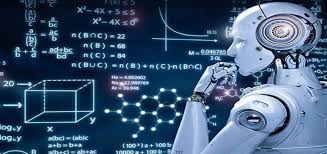
As we step into 2025, the pace of technological innovation continues to accelerate, reshaping industries and our everyday lives. From artificial intelligence to futuristic connectivity solutions, here are the top recent technology trends in IT defining this year:
1. Artificial Intelligence (AI) Evolution
AI has advanced beyond traditional applications, entering nearly every aspect of technology:
- Generative AI: Tools like ChatGPT and DALL-E have evolved, enabling businesses to create content, design, and even write code with minimal human intervention.
- AI in Healthcare: Predictive diagnostics, AI-driven drug discovery, and personalized treatment plans are now mainstream, revolutionizing patient care.
- Autonomous Systems: AI-powered drones, robots, and self-driving cars are smarter, safer, and more efficient than ever.
2. Quantum Computing Advancements
Quantum computing is no longer just a theoretical concept,it is one of the top importent technology ternd in comming era In 2025:
- Companies like IBM, Google, and startups have made significant progress in building practical quantum processors.
- Applications in cryptography, logistics, and complex simulations are beginning to show real-world results.
- Quantum-as-a-Service (QaaS) platforms are accessible to researchers and businesses for niche problem-solving.
3. 5G and Beyond
The widespread adoption of 5G is paving the way for faster and more reliable connectivity:
- 6G Research: Early trials of 6G networks promise speeds up to 100 times faster than 5G.
- IoT Expansion: Smart cities, connected cars, and industrial IoT devices are benefiting from ultra-low latency and enhanced connectivity.
- Enhanced Remote Experiences: Virtual meetings, remote surgeries, and augmented reality applications are more seamless and immersive.
4. Augmented Reality (AR) and Virtual Reality (VR)
AR and VR technologies are transforming entertainment, education, and business:
- Mixed Reality: Devices that blend AR and VR create interactive environments for gaming, training, and collaboration.
- Metaverse Expansion: The metaverse—a virtual world where users interact—is now integrated with real-world applications, from virtual offices to digital marketplaces.
- Education and Training: VR classrooms and AR-enhanced job training are gaining traction for their immersive learning experiences.
5. Sustainable Tech Innovations
Environmental concerns are driving technological breakthroughs in sustainability:
- Green Energy: Solar, wind, and hydrogen technologies are more efficient and accessible.
- Circular Economy: Tech companies are emphasizing recyclable materials and sustainable production practices.
- Smart Grids: AI-driven energy grids optimize electricity distribution and reduce waste.
6. Advanced Robotics
The robotics industry is reaching new heights in capability and adoption:
- Humanoid Robots: Robots capable of performing complex human tasks are being deployed in hospitality, healthcare, and manufacturing.
- Collaborative Robots (Cobots): These robots work alongside humans in warehouses and production lines, enhancing productivity.
- Personal Robots: Household robots for cleaning, cooking, and personal assistance are becoming increasingly sophisticated.
7. Blockchain Beyond Cryptocurrency
Blockchain technology is finding applications far beyond Bitcoin and Ethereum:
- Decentralized Finance (DeFi): Blockchain-powered financial services offer transparency and accessibility.
- Supply Chain Management: Blockchain ensures transparency and traceability in global supply chains.
- Digital Identity: Blockchain-based identities are providing secure and verifiable personal credentials.
8. Biotechnology and Genetic Engineering
Biotech advancements are addressing some of humanity’s biggest challenges:
- CRISPR Gene Editing: Precision gene-editing tools are being used to treat genetic disorders and improve crops.
- Synthetic Biology: Creating synthetic organisms for use in medicine, agriculture, and biofuels.
- Lab-Grown Meat: Sustainable and ethical alternatives to traditional meat are reaching mass production.
9. Edge Computing and IoT
Edge computing is enabling faster data processing and real-time applications:
- Localized Data Processing: Devices process data closer to the source, reducing latency.
- Smart Homes: IoT devices with edge computing capabilities enhance security and convenience.
- Industrial Automation: Factories use edge computing to improve operational efficiency and reduce downtime.
10. Space Exploration and Commercialization
Space technology is advancing, fueled by both government and private initiatives:
- Space Tourism: Companies like SpaceX and Blue Origin are making space travel accessible to civilians.
- Lunar and Martian Missions: Ambitious plans for human exploration and colonization of the Moon and Mars.
- Satellite Technologies: Satellite constellations provide global internet access and improved Earth monitoring.
Conclusion
The technological landscape in 2025 is brimming with innovation and promise. From AI and robotics to sustainable energy and space exploration, these trends are shaping the future and redefining what’s possible. Staying informed and adaptable will be key to leveraging these advancements in personal and professional realms.



I’m impressed, I need to say. Really not often do I encounter a weblog that’s each educative and entertaining, and let me tell you, you may have hit the nail on the head. Your idea is outstanding; the issue is something that not sufficient persons are speaking intelligently about. I am very blissful that I stumbled across this in my seek for one thing regarding this.
thanks drover sointeru
once again ..